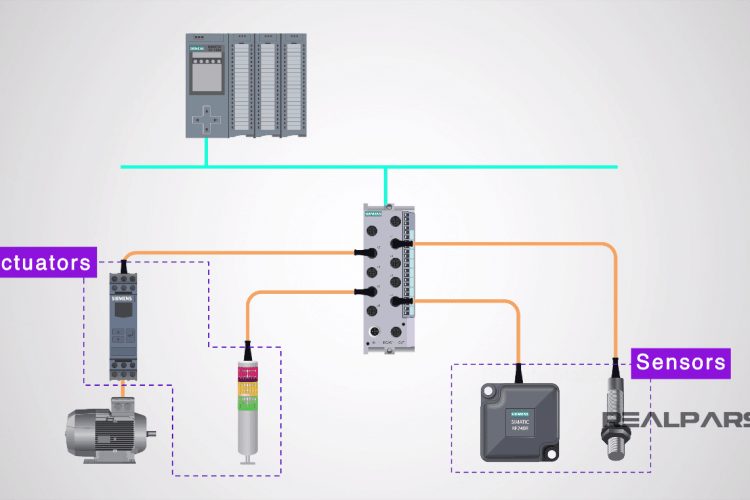IO-Link is a point-to-point communications protocol that uses standard ethernet cables and connectors to transmit data between IO-Link devices that are linked to an IO-Link-compatible master system. IO-Link devices are used in a variety of applications, including factory automation, process control, and material handling for the medical, auto and aerospace industries. This article will take a look at how IO-Link devices work, why they’re important and the benefits of implementing IO-Link technology for industrial automation purposes.
What is an IO-Link Device?
An IO-Link device is a small, point-to-point field device that uses standard ethernet cabling to connect to a controller. IO is an abbreviation for “input/output” and is used to describe how information systems communicate by sending and receiving messages or signals.
IO-Link devices are typically used to extend the inputs and outputs (I/O) of a control system or other controller and are also used for connecting sensors or actuators to the controller. IO-Link devices are available in a variety of form factors, and there are multiple mounts available for different IO-Link devices.
An IO-Link device typically has one or two digital inputs and one or two digital outputs. The digital inputs can be used to monitor the state of a sensor, while the digital outputs can be used to control an actuator. An actuator is a device that converts energy into motion and can either be linear or rotary. Linear actuators use a variety of mechanisms to produce linear motion, including hydraulic, pneumatic and electrical. Rotary actuators use hydraulic, pneumatic or electrical power to produce torque or rotational force.
How Do IO-Link Systems Work?
While IO-Link technology can seem difficult to understand in the context of process automation, it’s highly likely you already use an IO device every day. In fact, the most common IO-Link devices are keyboards, mice and monitors. Other common IO devices include printers, scanners and digital cameras.
IO-Link devices and systems are simply a set of technology designed to allow one device or system to communicate with another. However, an IO-Link device in an industrial or manufacturing setting is a little more sophisticated than standard IO devices. Industrial IO-Link systems will use ethernet cabling to connect to a controller. This controller uses the IO-Link protocol or program to communicate with the IO-Link device. The IO-Link protocol is a simple, point-to-point protocol that uses a digital stream for communication. IO-Link devices are addressable and can be assigned unique access by the controller depending on who the user is.
IO-Link devices are powered by the controller and do not require a separate power supply. An IO-Link device must be manufactured to a high standard, as it will typically be used for industrial applications and will need to reliably operate in harsh environments.
What Are the Benefits of IO-Link Devices?
IO-Link systems provide several benefits over traditional analog and digital communication methods. Some of these benefits include:
- Increased flexibility – It’s possible for multiple IO-Link devices to be daisy-chained together, allowing for a more flexible and modular system design. This can be important for manufacturers and businesses that may need to quickly adapt their production and processing systems to meet changing demands.
- Improved Diagnostics – IO-Link devices can provide diagnostic information to the master system, which can be used to troubleshoot, optimise and improve system performance.
- Simplified Wiring – IO-Link systems use standard ethernet cables and connectors. This not only simplifies wiring and installation, but ethernet cables are also widely available, making it easy for manufacturers to acquire additional cabling quickly when needed.
- Scalability – IO-Link systems are uncompromisingly scalable. This means the system can be easily scaled up or down depending on the needs of the business owner or user.

